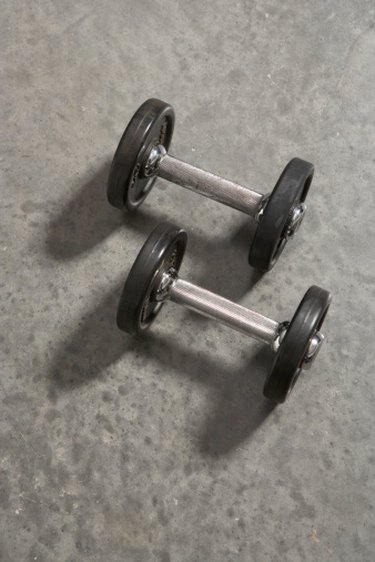
Laying ceramic tiles on an uneven concrete subfloor results in cracked tiles from people walking across the surface. Any dip or bump along the concrete subfloor creates an unstable surface for the tile, compromising its weight-bearing structure. Before any flooring is installed, a self-leveling compound should be applied to the concrete surface. Two compounds are available for consumers, although it is the consumer's perception and installation needs that dictate which compound is the best.
Self-Leveling Compound Identification
Video of the Day
Self-leveling compounds are cement-based powdered mixtures that a worker prepares before application. The compound is spread across a hard, concrete floor and leveled with a trowel or roller. The compound fills in the concrete dips and covers the bumps. The resulting floor is level for applying new flooring on top.
Video of the Day
Acrylic-Based Compound
Acrylic-based self-leveling compounds require mixing the cement powder with a specified amount of acrylic polymer liquid, depending on the compound's manufacturer. The advantages of adding the acrylic into the cement mixture are added compound elasticity, extra adhesion to the concrete subfloor, and resistance to abrasion. However, acrylic-based compounds require longer drying times because of the polymer addition. Factors that influence the drying time include the humidity level and outside temperature.
Water-Based Compound
The most common type of self-leveling compound is water-based. A powdered cement mixture is added to water, creating the spreadable compound. Workers tend to use this type more often since it dries in about 10 to 20 minutes. The quick drying allows faster flooring installation and project completion. However, workers must mix and apply the compound quickly or it will harden in the bucket. All applicable spreading tools must be readied. Workers must have experience for spreading the compound quickly and accurately for the best level floor.
Compound Considerations
The addition of acrylic to the compound's mixture provides a more sturdy structure compared to a water-based compound, creating a better quality floor surface. But the main factor determining the best compound for a specific application is time. An Acrylic-based compound requires a longer drying time than a water-based compound. This waiting time generates a lengthy project duration that could possibly increase labor costs. The water-based compound offers a faster drying and project duration time, but is not as sturdy as acrylic. The water-based compound also requires experienced personnel, or the flooring quality is compromised from improper installation.
Compound Preparation
Verify that the workers mix the compound correctly. Each compound manufacturer uses different ratios of water and acrylic, along with the cement mixture. An improper mixture will not harden correctly on the concrete subfloor, requiring removal and reinstallation.